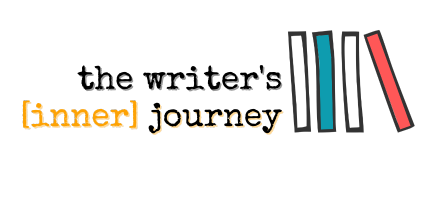“I like being slightly uncomfortable when I’m writing about something….It forces me to dig deeper and learn more than I’d probably ever use in the piece.”
— Jen. A Miller
Jen A. Miller is author of Running: A Love Story. Her work has appeared in the New York Times, Washington Post, Philadelphia Inquirer, Runner’s World, espnW, Allure and SELF. She lives in Collingswood, N.J. with her Jack Russell Terrier Emily.
♦♦♦
Meredith: Homeostasis is a concept I learned on my first day of graduate school. It means the desire to revert back to the familiar, for things to remain the same. As a writer, how do you remedy this type of stagnation that can thwart creativity? Or, do you believe there’s a time for it?
JEN: When I’m bored with work, I know I need to shoot higher. Before I even had the idea for Running: A Love Story, I wrote a travel guide about the Jersey Shore, and then I updated that book three years later for the second edition.
It was great! The books were fun and interesting, and lead to a lot of work that spilled over into my freelance life. I was known as Jersey Shore Jen for a while.
But it got a little staid. While things are always changing down the shore (especially after Sandy), I could only write so many travel guides. When I was offered the opportunity to update the book for a third edition, I had a choice to make. It would have been relatively easy money, but I wasn’t excited about doing it. I had gotten comfortable being known as the Jersey Shore expert, but I started to feel hemmed in by it too.
I turned down the offer, and started talking about writing “the big book.”
It was a huge risk: professionally and personally, especially when writing is the thing that pays your bills. The path to book publication, even if you’ve written books before, can be an onerous one – not even including the idea! There’s writing the proposal to get the agent (I represented myself on my first two books), picking the agent, writing the proposal to sell the book, picking the publisher. One book project that I was told was a sure fire hit didn’t happen. That was a major blow, and it took me a while to try again. I’m glad I did.
When I reach that crossroads of do I stay or do I go now, I think about times when I took the shot and made it, and what a difference it’s made in my career today. Have I missed? Sure. But I don’t even remember all of those misses. So I take the shot.
♦♦♦
Meredith: How do you block out the chatter—yours and everyone else’s?
JEN: Sometimes it’s a matter of putting in your headphones, putting your head down and writing away. If I’m overwhelmed by
something, I’ll physically move locations, whether that’s to my bedroom, where I have a writing surface; to my mom’s sunporch; or even to a hotel. I wrote big chunks of Running: A Love Story while locked away in hotel rooms overlooking the ocean.
On a bigger level, though, I need to block out a lot of noise about trends, the writing industry, etc. Those things are important, but if I read every single piece about how freelance writing is terrible, how publishing is terrible, I wouldn’t have even started. It can be overwhelming, which is why running (and when I’m not training for a race, hiking) is so key to me. It hits pause on everything, even if it’s just a half hour or an hour, and makes everything not seem so bad. Of course that’s when I get some of my best ideas too.
I’ve taken a lot of long road trips too, that have had nothing to do with writing projects. They’ve helped take me out of my environment for a while, take me to somewhere new. When I’m back, I’m refreshed.
♦♦♦
Meredith: When you’re in love with a particular idea so much, how do you know when enough is enough—for example, words in a sentence, a line in an essay, a chapter in a book (memoir)? Corollary: how do you find the focus when the focus is…your life?
JEN: I can’t agonize over something forever, so I use deadlines to make me wrap things up. From the time I got the book offer for Running: A Love Story to when I turned in the final chapter of the manuscript was five months (that may sound short, but I had been working on the book for nearly a year before it sold). I also turned in the chapters on a rolling basis so that I was just about done with some of the early chapters two months after I sold the book.
Not everyone works this way. I do because I know that with long deadlines, I won’t work on it, and if I hold onto something too long, I’ll start picking at it, which can make it worse. Not to quote Frozen, but sometimes you really do need to let it go.
And if I’m at the end of my writing rope – with books or articles – I usually send it to my editor and say “tell me if this is finished.” Sometimes they see that it’s done – or not done – and I don’t. That’s why I’ve worked hard to build and maintain relationships with editors who are OK with that. It’s lead to some of my most popular (at least as they tell me) New York Times pieces. It’s so key to have that other person keep you in check.
♦♦♦
Meredith: The screenwriter, author and therapist, Dennis Palumbo, has a quote at the very end of Writing from the Inside Out, from Shunryu Suzuki: “In the beginner’s mind, there are many possibilities; in the expert’s mind, there are few.” There is this collective sense that experts are better, but perhaps, in a roundabout way, what it suggests is that more power comes to the beginner, because the beginner sees hope and has no expectations. Like, if you’re going to be an expert, be an expert in being a beginner/newcomer. What’s your take?
JEN: That’s interesting. When I wrote the Jersey Shore book, a criticism I sometimes heard was that I shouldn’t be allowed to write the book because I didn’t live there. I think that’s one reason I should have written the books. I’d been going to that area of the country since I was a baby, so I knew enough so that I wasn’t parachuting into the place, but I had enough of that visitor wonder and curiosity that I wasn’t skipping obvious things. When some locals read the books, they told me that they learned things about shops or buildings or landmarks they passed every day that they never knew.
I like being slightly uncomfortable when I’m writing about something – and that applies to article work too. It forces me to dig deeper and learn more than I’d probably ever use in the piece. It keeps me from being lazy.
♦♦♦
Meredith: What was the single most debilitating self-imposed rule you had to abandon in yourself and your writing—the rule that you thought made you feel safe and in control but actually didn’t—before you could put yourself on the page? How did you let it go—or maybe you didn’t?
JEN: Way back when I started out as a freelance writer, I told myself I couldn’t fail. On a macro level, that was “fail as a writer.” On a micro level, that was “fail in getting this assignment; fail at getting this interview,” those kinds of things. I quickly realized, though, that failing was OK. Not trying would have been a whole lot worse. And when I failed, I assessed what happened, and learned from it too.
I still trip up on this occasionally. I was 25 when I became a full time freelance writer, and I had much lower overall life costs then. If I failed, I could have slipped back into an office job. I don’t know anyone who would hire me know. Even though I’m further advanced in my career, that idea of failing is still there. I temper it by having some what I call “gimme” work. It’s not the most exciting stuff, but it pays the bills, and it allows me to take those chances I still need to take.
Visit Jen at JenAMiller.com.
Photo by Danielle MacInnes on Unsplash

